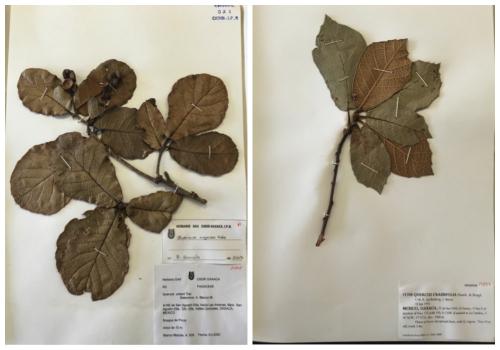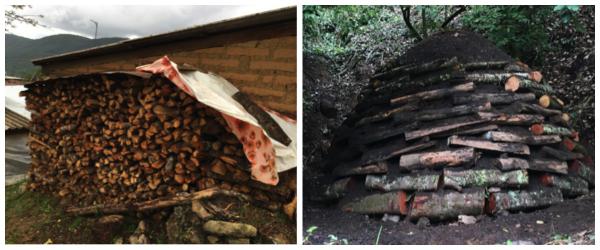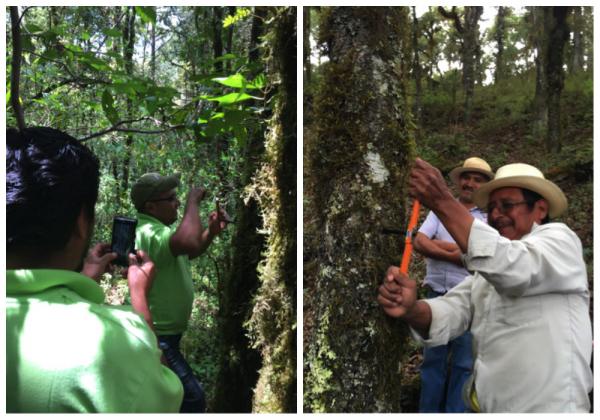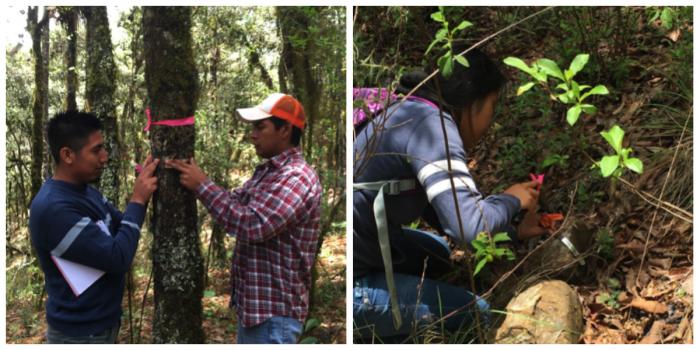
I spent this summer in Oaxaca, Mexico establishing a field site for my dissertation research on the ecology and management of oak in montane mixed pine-oak forest. Mexico houses 160-165 of the 220 oak species found in the New World, and in Oaxaca state alone there are 70 species of oak. In Oaxaca, oak is a preferred species for firewood, both for domestic use and also for the production of mezcal (a traditional liquor made from agave), but little is known about the growth, distribution or successional dynamics of most oak species in the region.

I began the summer building connections with local universities and organizations to establish my field site. I will be working with a union of three communities called IXETO (Union de Comunidades Forestales de Ixtlan-Etla). IXETO provides technical support for forest management and timber harvesting of pine in the three communities of Nuevo Zoquiapam, San Miguel Aloapam, and San Juan Bautista Jayacatlan. Of the three, Nuevo Zoquiapam also has official permits to sell firewood and charcoal commercially, most of which comes from various oak species.
I spent several weeks in meetings with community leaders and the forestry engineer of IXETO obtaining permission to conduct my research in their forests and planning out potential locations and species to work with. Because there are so many oak species in the region, I was also particularly lucky to build a relationship with a local herbarium at CIIDIR, a local university. Examining herbarium specimens helped me familiarize myself with some of the more common species, and will be particularly helpful in the future when I may need technical assistance identifying my morpho-types to species (and will be adding to the local collection in the process). I also learned a great deal from the consejo de administracion of IXETO (elected representatives from each of the three communities who manage the work of IXETO during a year long appointment) who accompanied me into the field. Although these men do not know the species names for oaks, they are experts at identifying differences between different species by their local Zapotec names.

After consultations with the community, we decided to focus on four species that are particularly favored for firewood and charcoal: Quercus laurina, Q. rugosa, Q. castanea, and Q. liebemanni. For these species, I took some sample increment cores to examine whether annual rings seem to be present and discernible. In temperate areas with strong dormant seasons in the winter, annual rings are a reliable way to measure growth over time. In this area there is no strong cold season, but there is a pronounced dry season, which may produce the same effect in tree ring growth. If these rings prove to be reliable, I will be greatly expanding my sampling in the future, as increment cores can provide a great deal of information about the historical growth and establishment of trees within a forest stand.
If tree rings do not seem to be reliable (i.e. if they are difficult to discern or do not each represent a single year), then an alternate way to measure tree growth is through the use of steel dendrometer bands. These bands use a spring to expand as the tree grows, and can be measured every year or even every month to record tree circumference growth. So in the second half of the summer I trained a group of students from the Instituto de Technologia del Valle de Oaxaca to place a total of 90 bands on trees. The students will measure these bands every month for the next year as a way of examining the seasonality of growth. If we find a pronounced dormant period during the dry season, we can then have more confidence that the tree rings we find in our increment cores represent a single year’s growth.
Because this work forms the beginning of my doctoral dissertation, we are just getting started and I am excited to be heading back in the years to come.
